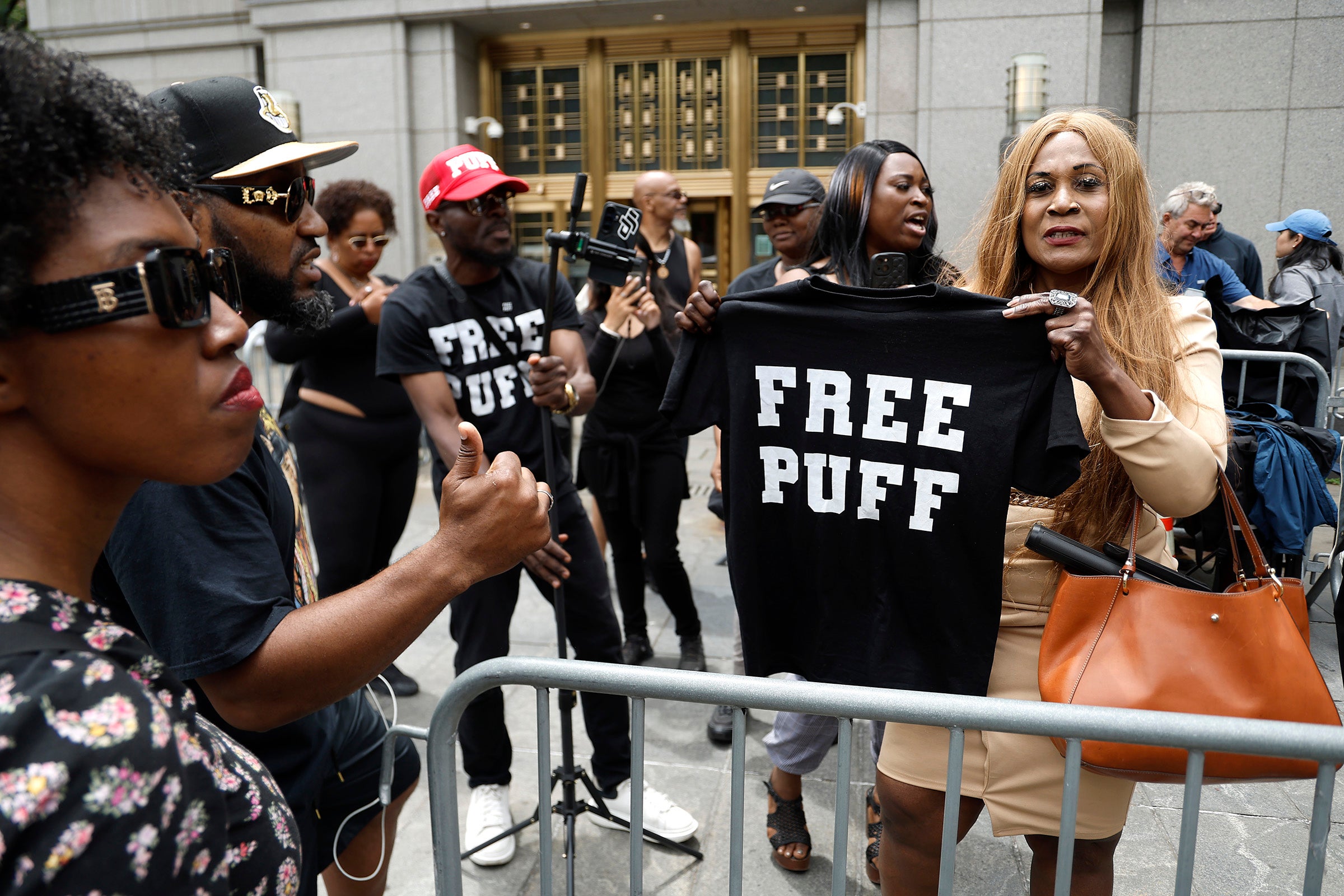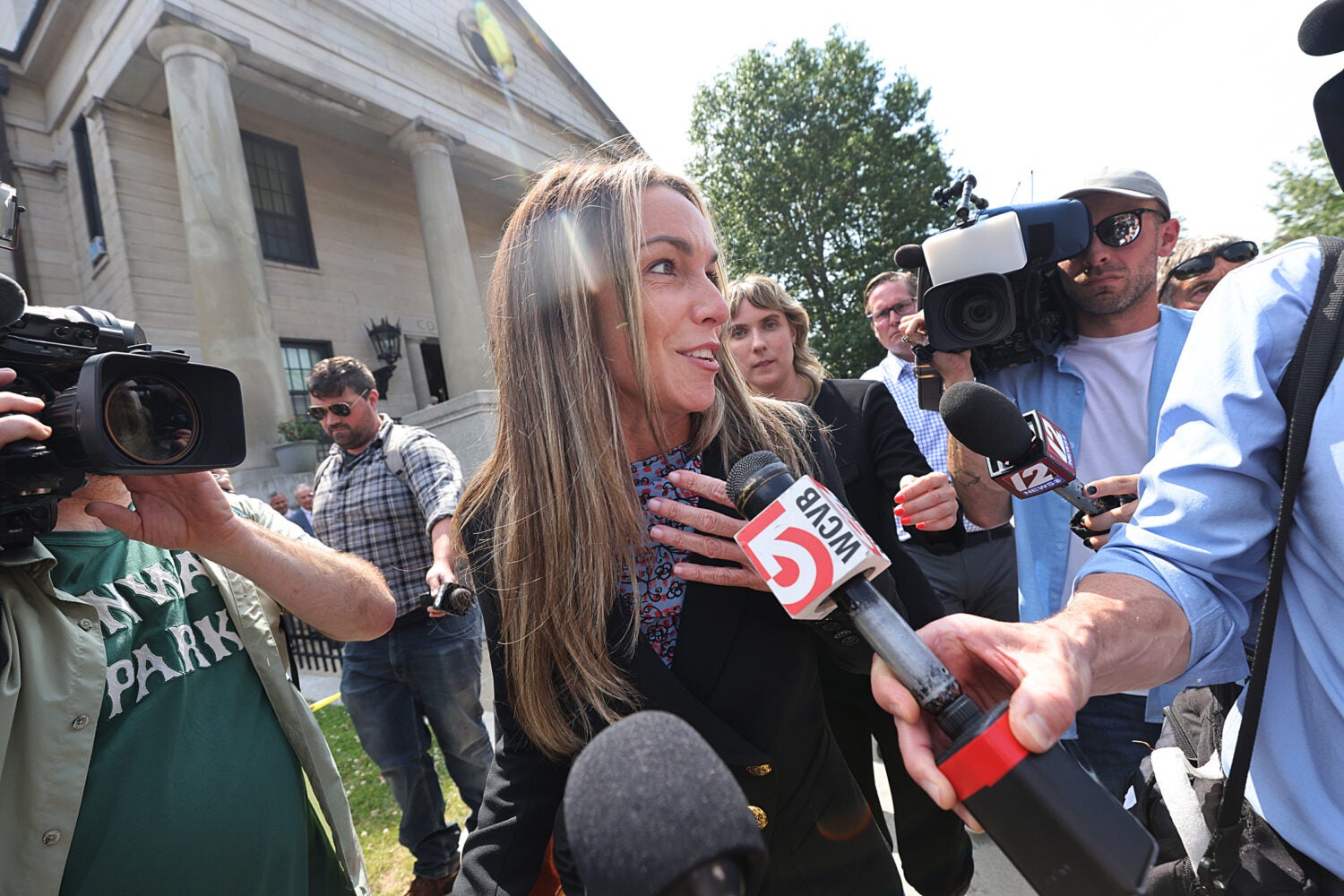In Massachusetts, Karen Read faced charges involving the death of a policeman, a drunken party, and accusations of a cover-up. In New York, musician and producer Sean “Diddy” Combs battled allegations of sex-trafficking and racketeering.
Both high-profile criminal trials ended this summer with not guilty verdicts on the most serious charges. But while the cases might seem otherwise unrelated, they share another dubious honor: Both captured the public’s imagination and attracted frenzied, nonstop coverage in traditional and social media — and even groups of loyal supporters.
Read and Diddy are hardly the first defendants to endure extreme media attention, which is somewhat inevitable in some situations, given the U.S.’ strong protections on free speech for individuals and the press, says Ron Sullivan ’94, the Jesse Climenko Clinical Professor at Harvard Law School.
What is new, he says, is just how omnipresent the coverage can be today.
“There have always been big spectacle trials, but there is something different about the era in which we live now, where social media is everywhere and there is quite literally 24-hour gavel-to-gavel coverage of trials,” says Sullivan, who has also served as a lead defense attorney for several high-profile criminal cases.
All this can impact a defendant’s right to a fair trial, in Sullivan’s view. With more commentators on more platforms, jurors have many more opportunities to be exposed to biasing information. “These commentators talk about aspects of the trial the jury isn’t supposed to hear, such as inadmissible evidence, sidebars, and arguments about excluding evidence from the jury.”

There are few completely satisfying solutions to this problem, given the First Amendment speech implications and the Sixth Amendment’s provision that trials be “public,” Sullivan says. And practically, he adds, it is difficult to prevent jurors from using their computers or phones to look up information.
One solution is for a judge to order that a jury in a major trial be sequestered, which entails isolation in a hotel, where jurors are not allowed to contact others or access media. But this is a vanishingly rare mechanism, Sullivan says, because it is not only very expensive, but it is “also extraordinarily disruptive to the lives of citizens.”
Instead, judges generally rely on the honor system, asking jurors to swear an oath that they will not access traditional or social media about their case, or to inform the court if they do. “We have a system where we rely on the goodwill and the honesty of citizens who agreed to serve,” Sullivan says.
On the bright side, this promise is often enough, he says. “The solemnity of the court setting, the dark oak walls, the court officer — who starts the proceedings by calling out ‘oyez, oyez’ — for jurors, it’s like they are transported back two centuries into a history that they have now become part of. And that helps reinforce the constraining norm.”
“What I think we need to do as a system is stop pretending as though this social media phenomenon has not mushroomed in the way that it has.”
But Sullivan says that, in his experience, nearly every jury has at least one juror who, accidentally or otherwise, accesses information about the offense, the defendant, or the ongoing trial. “As an individual who studies juries — and as a person who has tried many high-profile cases — I am convinced that at least some jurors disregard the instructions of the court.”
That’s why good defense attorneys know to get ahead of the problem, he adds. “I go into a big, high-profile case assuming that everybody in the entire jury pool knows something about the case, or after the first day, they’ll go home and google it and they’ll find out about it.”
During voir dire — the process by which the jury is selected — Sullivan looks for people who are committed to fairness of the process, even if they have heard of the crime or the defendant. “I want someone who believes in their heart of hearts that they can render a fair verdict, even if that fair verdict is antagonistic to their initial feelings about the case.”
In Sullivan’s view, the media narrative often skews toward the government’s theory of the case, so his job as an advocate is to present a different reading of the facts jurors may have already encountered. “Jurors come away feeling underwhelmed by the government’s presentation, and this can combat some of the negative impact of social media by introducing reasonable doubt.”
A judge can also act if she learns that a juror has read or shared information about the defendant or the proceedings, Sullivan says. This can include dismissal of the juror or, in extreme circumstances, declaring a mistrial. Otherwise, the defendant has “one heck of an issue on appeal,” he says.
Courts have another option to combat the impact of ubiquitous media coverage. They could hold trials more quickly, before members of the media do their own investigations and the public has had time to digest the story. But such speediness is often impractical in a modern context, Sullivan says.
“I had a case a few years ago that involved 37 million documents. There’s just no way you can go through all of them and discuss them with your client in a rapid fashion,” he says. “The right to a speedy trial sometimes has to give way so that the defendant has time to adequately prepare for what the government is presenting.”
Ultimately, Sullivan believes that no solution could fully solve the issues that a media circus creates for defendants and the legal process. But the first step, he says, is admitting the extent of the problem.
“What I think we need to do as a system is stop pretending as though this social media phenomenon has not mushroomed in the way that it has,” he says. “Judges and advocates need to be able to inquire of jurors about their social media use.”
To Sullivan, this means giving lawyers a wider berth to ask questions during the jury selection process — and, more radically, during the trial itself.
“If there is an institutional change, it would be the lawyers can adequately question the jury, and there would be a mechanism by which, particularly in these high-profile trials, there can be check ins to see if jurors have been exposed to social media and what the nature of that exposure has been.”
Want to stay up to date with Harvard Law Today? Sign up for our weekly newsletter.
